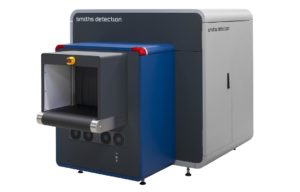
Australian Airport Trials Smiths Detection CT Checkpoint Scanner Smiths Detection says that Gold Coast Airport in Australia completed a six-week evaluation of the company’s HI-SCAN 6040 CtiX computed-tomography scanner for scanning carry-on bags at airport security checkpoints. Smiths’ automatic-tray handling system, called iLane.evo, and a checkpoint management software that enables remote screening of scanned images, called Checkpoint Evo Plus, were also featured in the trial. “The new screening process was a real success with passengers,” says Marion Charlton, chief operating…

 By
By 











